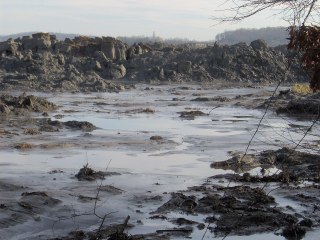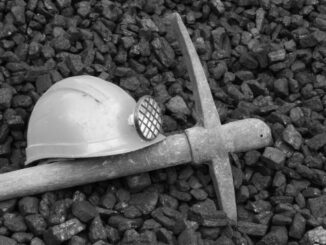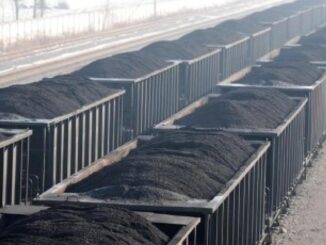
A settlement between environmental groups and the U.S. Environmental Protection Agency could for the first time impose regulations on hundreds of coal ash sites nationwide that are not covered by 2015 federal coal ash rules.
The development stems from a 2022 lawsuit naming sites in Indiana and Illinois and accusing the EPA of failing to regularly review its rules for so-called “legacy” or “historic” coal ash sites — landfills and dumps that were inactive before federal coal ash rules took effect in 2015. The EPA is now enforcing those 2015 rules but still ignoring older sites not covered by the rules.
A Feb. 3 consent decree has made environmentalists hopeful the legacy “loophole” may soon close, forcing utilities to reckon with countless tons of coal ash deposited at hundreds of sites before the 2015 rules took effect.
“We’re not calling it a win, but they’re telling us they’ll consider closing the loophole,” said Susan Thomas, press, policy and legislation director for Transition Northwest Indiana.
While federal coal ash rules demand groundwater monitoring and cleanup of coal ash in more than 500 ponds and pits nationwide, advocates have long pushed to address landfills that were exempted under those regulations.
They argue that companies should also be forced to clean up countless tons of coal ash mixed with dirt and used to build berms and roads or fill in the land on and near coal plant sites.
Sign up for Energy News Weekly
Get the most important energy news of the week delivered directly to your inbox.
The August 2022 lawsuit filed on behalf of Indiana, Tennessee and Illinois civil rights and environmental groups argues that the federal law governing waste disposal mandates the coal ash rules should have been reviewed and revised to cover the coal ash thus far exempt from the rules.
With the consent decree, the EPA appears to agree, with a promise to review the rules and reject or announce a draft revision by May 5. Following public comment, a final rule must be adopted by May 2024, according to the consent decree.
We want your feedback!
The Energy News Network wants to hear your thoughts so we can improve our coverage and newsletters. Help us out by taking this short survey.
“There have been hundreds of coal ash dumps between impoundments and landfills which have been completely exempt since the [coal ash] rule went into effect over 7 years ago,” said Mychal Ozaeta, an attorney for Earthjustice who represented the plaintiffs. “In the process of [the rules] being drafted and finalized and implemented, we advocated for these units to be included and regulated, but the EPA chose not to.”
While the lawsuit sparking the consent decree focuses on the site of NIPSCO’s Michigan City, Indiana, coal plant; the TVA Bull Run Fossil Plant in Tennessee; and the Waukegan coal plant in northern Illinois, any rule revision would affect sites nationwide.
The lawsuit notes that every three years, the EPA is required to review rules — like the Coal Combustion Residuals regulations — enshrined under the Resource Conservation and Recovery Act. But the EPA has not taken this step regarding the coal ash rule, even after a 2018 federal court ruling in the D.C. Circuit Court of Appeals ordered it to do so.
“EPA is now in clear violation of the court’s landmark order designed to close the loophole and tackle the cleanup of millions of tons of leaking coal ash,” says an August 2022 letter sent to EPA Administrator Michael Regan by 121 environmental and community groups.
Under the Trump administration, the EPA and companies largely ignored mandates that coal ash could not pollute groundwater, and data reported by the companies themselves showed the vast majority of coal ash repositories were indeed contaminating groundwater with arsenic, mercury, lithium, and other heavy metals and toxins.
“It’s clear that regulated units are contaminating groundwater at a very significant level, which leads us to believe the strong likelihood that these older unlined landfills are contaminating groundwater at an even higher rate than the regulated units,” Ozaeta said. “The basis of our lawsuit is if the EPA conducts the necessary review, they’ll see based on all the data that the rule needs to be revised to regulate these unregulated older landfills that are contaminating groundwater and impacting nearby communities.”
Since January 2022, the EPA has issued a number of decisions related to coal ash, signaling it is finally taking the 2015 rules seriously. Among other actions, the EPA has ordered companies to stop placing ash in unlined ponds and demanded more robust groundwater monitoring.
Regan has noted the environmental justice implications of coal ash, which is disproportionately likely to be stored near low-income communities and communities of color, including where residents rely on well water that is not regularly tested for contamination that could result from coal ash.
“The hope is that the rule will be revised, and then my greatest hope is that they will clean up all the waste they have made,” said Donnita Scully, branch secretary of the LaPorte County NAACP. “[Companies have] created this for the benefit of their shareholders, they’ve made money, and so as a result they’ve created these contaminants that are affecting the community in Michigan City. These are predominantly Black and brown individuals” put at risk.
“The utility companies are going to try to water down the data and everything they can in order to get their way,” Scully continued, “but we’re going to stand firm.”
The August 2022 letter noted that advocates have identified at least 287 inactive coal ash landfills in 38 states that are exempt from the regulations, including two million tons of coal ash sitting “precariously behind corroding steel pilings” on the shore of Lake Michigan in Michigan City; more than two million tons of coal ash used in roads and embankments in Puerto Rico, and “unlined leaking” and “immense” landfills, respectively, in Tennessee and Orlando that closed just months before the 2015 rules took effect.
The lawsuit was filed on behalf of the Indiana State Conference and LaPorte County Branch of the NAACP, the Statewide Organizing for Community eMpowerment in Tennessee, Clean Power Lake County in Illinois, the Hoosier Environmental Council in Indiana, and the national Environmental Integrity Project and Sierra Club.
Experts with these and other groups say legacy coal ash not covered by the 2015 rules is likely contaminating groundwater, surface water and possibly drinking water wells on a regular basis, while also posing a catastrophic risk if landfills or dirt mixed with coal ash were to collapse into water bodies like Lake Michigan.
Just Transition Northwest Indiana executive director Ashley Williams said that while many residents may not be aware of the threat posed by coal ash, disasters like the 2008 coal ash spill in Kingston, Tennessee, show the urgency of the “crisis,” and the necessity of regulatory action.
In 2011, a bluff collapsed outside We Energies’ power plant in Oak Creek, Wisconsin, sending coal ash along with mud, debris and construction equipment into Lake Michigan — the drinking water source for Oak Creek, Milwaukee, Chicago and other nearby cities.
“Unfortunately a lot of time it takes a crisis to be ultimately a catalyst for change,” Williams said. “It has been hard to talk about the ticking time bomb in our backyard, since it hasn’t gone off yet, it hasn’t imploded and poured into the lake yet. But it’s not if, it’s when. It’s a silent crisis that has very much flown under the radar, but with coalition work and local ministers and the lawsuit, we’ve been able to sound the alarm on the crisis.”



